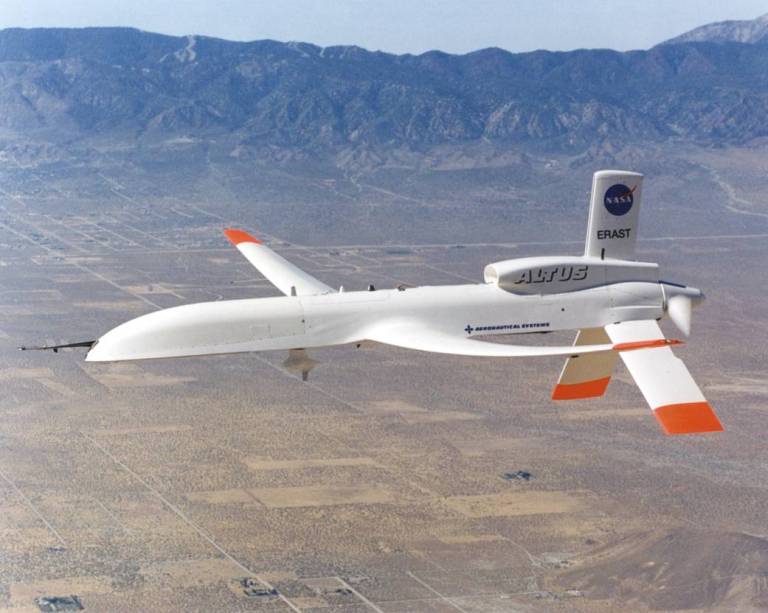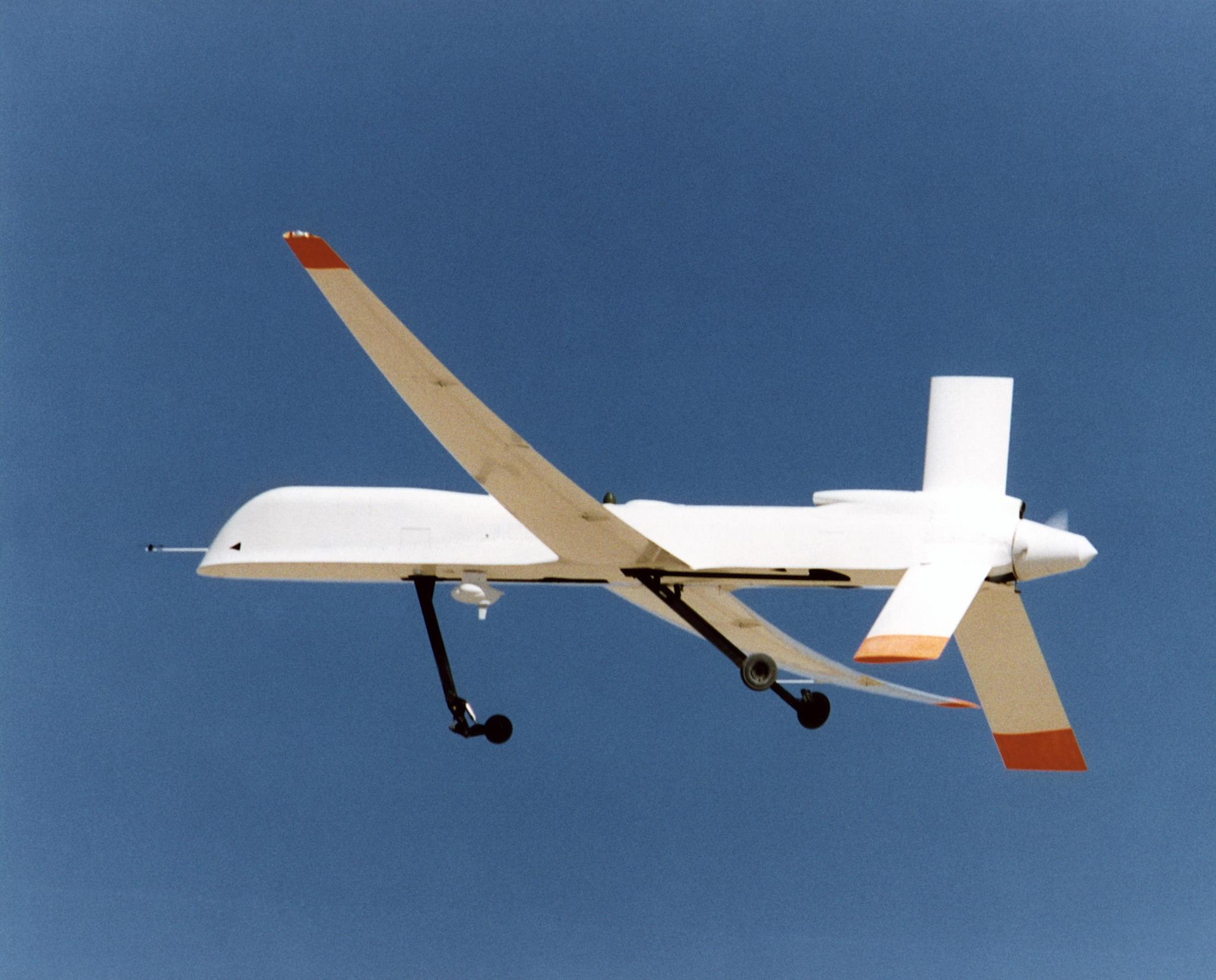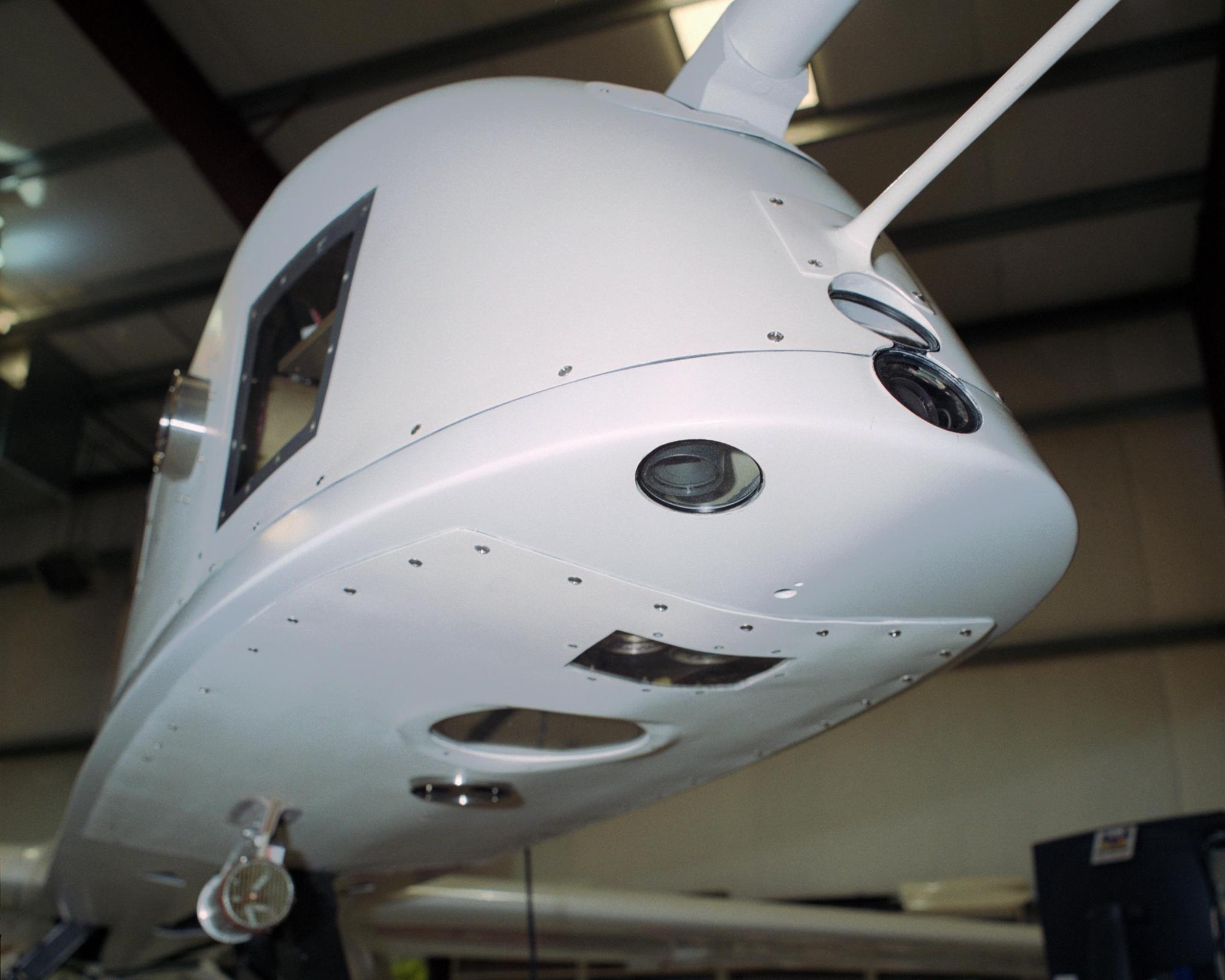Altus II Remotely Piloted Aircraft

Altus II was one of several slow-flying, remotely piloted aircraft that were developed and evaluated by a NASA-industry team under its Environmental Research Aircraft and Sensor Technology (ERAST) project in the late 1990s. There were two primary goals for the Altus II development: serve as a testbed for performance and propulsion concepts that could lead to development of future remotely piloted or autonomous aircraft designed for high-altitude science missions, and to evaluate its practicality for use as an airborne platform for such missions.
General Atomics Aeronautical Systems Inc., of San Diego, developed Altus aircraft – Latin for “high” – as a civil variant of the Predator A, which the U.S. Air Force operates as a remotely operated surveillance aircraft. Although similar in appearance, Altus had a slightly longer wingspan and was designed to carry atmospheric sampling and other instruments for civilian scientific research missions in place of the military reconnaissance equipment carried by the Predators.
Altus was distinguished by a long, narrow, high aspect-ratio wing, a slender fuselage, rear-mounted engine and propeller, and inverted-V horizontal tail. It carriedup to 330 pounds of sensors and other scientific instruments in a nose-mounted payload compartment, a location designed to allow air being sampled by the sensors to be undisturbed by heat or pollutants from engine exhaust. and is powered by a four-cylinder Rotax 912 piston engine using a turbocharger built by Thermo-Mechanical Systems Inc. of Canoga Park, California.
General Atomics built two Altus aircraft: Altus I, equipped with a single-stage turbocharger, for the Naval Postgraduate School, and Altus II, with a two-stage turbocharger, for NASA under the ERAST project.
Altus Flight History
Altus II, the first of the two craft to be completed, made its first flight on May 1, 1996. With its engine at first augmented by a single-stage turbocharger it reached 37,000 ft during its first series of development flights at the center in August 1996. In October of that year it was flown in an Atmospheric Radiation Measurement study in Oklahoma conducted by Sandia National Laboratories for the Department of Energy (DOE). During the course of those flights, Altus II set a single-flight endurance record for remotely operated aircraft of more than 26 hours.
Completed in 1997, Altus I flew a series of development flights at Dryden that summer, and on one of them it reached an altitude of 43,500 ft while carrying a simulated 300-lb. payload, a record for a remotely operated aircraft powered by a piston engine with a single-stage turbocharger.
After major modifications and upgrades, including a two-stage turbocharger in place of its original single-stage unit, a larger fuel tank and additional intercooling capacity, Altus II returned to flight status in the summer of 1998.
Later that year, Altus II flew another series of Atmospheric Radiation Measurement missions conducted by Sandia National Laboratories for the DOE. Hard-to-measure properties of high-level cirrus clouds that may affect global warming were recorded using specially designed instruments while the Altus flew at 50,000 feet altitude off the Hawaiian island of Kaua’i. Data from the study was intended to help scientists better understand how the dual roles of clouds in reflecting solar radiation back into space and absorbing longer-wave radiation from the Earth work so they can build more accurate global climate models.
Altus II also served as the unmanned aircraft platform for a flight demonstration of remote sensing and imaging capabilities to detect hot spots in wildfires and relay that data in near- real time via the Internet to firefighting commanders on the ground. The demonstration, led by NASA’s Ames Research Center, was flown over General Atomics’ El Mirage development facility in Southern California’s high desert.
In the summer of 2002, Altus was the airborne platform for the Altus Cumulus Electrification Study (ACES), led by NASA Marshall Space Flight Center. The ACES experiment focused on the collection of electrical, magnetic and optical measurements of thunderstorms, which could help scientists understand the development and life cycles of thunderstorms and in turn could allow meteorologists to more accurately predict when destructive storms may hit.
Considered an experimental developmental aircraft, Altus II was retired upon the conclusion of the ERAST project. However, its performance led General Atomics’ to develop the larger, turboprop-powered Altair prototype and NASA’s eventual acquisition of a production version of the General Atomics’ Predator B for environmental science missions and aeronautical research.
The ERAST Project
The Environmental Research Aircraft and Sensor Technology (ERAST) project (1995- 2003), was meant to help companies develop aeronautical and sensor technologies for a new family of remotely-piloted, unmanned aircraft intended for upper atmospheric science missions. Designed to cruise at slow speeds for long durations at altitudes of 60,000 to 100,000 ft, such aircraft could collect, identify, and monitor environmental data to assess global climate change and assist in weather monitoring and forecasting. Such aircraft could also serve as airborne telecommunications platforms, performing functions similar to communications satellites at a fraction of the cost of lofting a satellite into space.
Additional technologies considered by the joint NASA-industry ERAST Alliance included lightweight materials, avionics, sensor technology, aerodynamics, and other forms of propulsion suitable for extreme altitudes and duration.
The ERAST project was managed by NASA’s Dryden Flight Research Center, while NASA’s Ames Research Center headed the sensor technology development. NASA’s Glenn and Langley Research Centers contributed expertise in the areas of propulsion, structures, and systems analysis. Several small high-technology aeronautical development firms, including Altus developer General Atomics Aeronautical Systems teamed with NASA in the ERAST Alliance to work toward common goals of the project.
Altus II Specifications
- Wingspan: 55.3 feet
- Wing area: 131 square feet
- Wing aspect ratio: 24
- Length: 23.6 feet (7 ms)
- Maximum gross takeoff weight: 2,130 pounds
- Wing loading at gross weight: 16.3 pounds per square foot
- Payload: Up to 330 pounds in nose compartment
- Propulsion: Rear-mounted Rotax 912 four-cylinder piston engine rated at 100 hp, integrated with a two-stage Thermo-Mechanical Systems turbocharger. An 84-inch diameter two-blade pusher propeller was used for flights up to about 53,000 feet altitude; a larger 100-inch diameter lightweight carbon-fiber propeller was installed for flights above that altitude.
- Fuel capacity: 92 gallons
- Airspeed: 100 knots (115 mph) maximum; 70 knots (80 mph) cruise, varies with altitude
- Maximum altitude: Above 60,000 feet (19,500 m) with two-stage turbocharger; about 43,500 feet with single-stage turbocharger
- Endurance: Approximately 24 hours, depending on altitude
- Construction: Primarily composites
- Manufacturer: General Atomics Aeronautical Systems Inc., San Diego, California





























